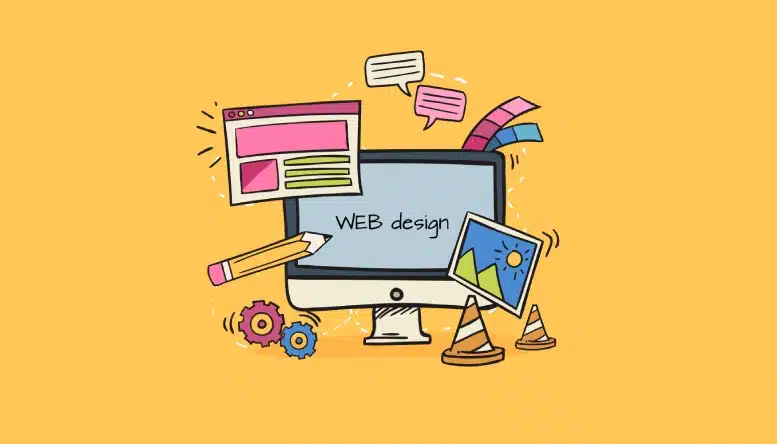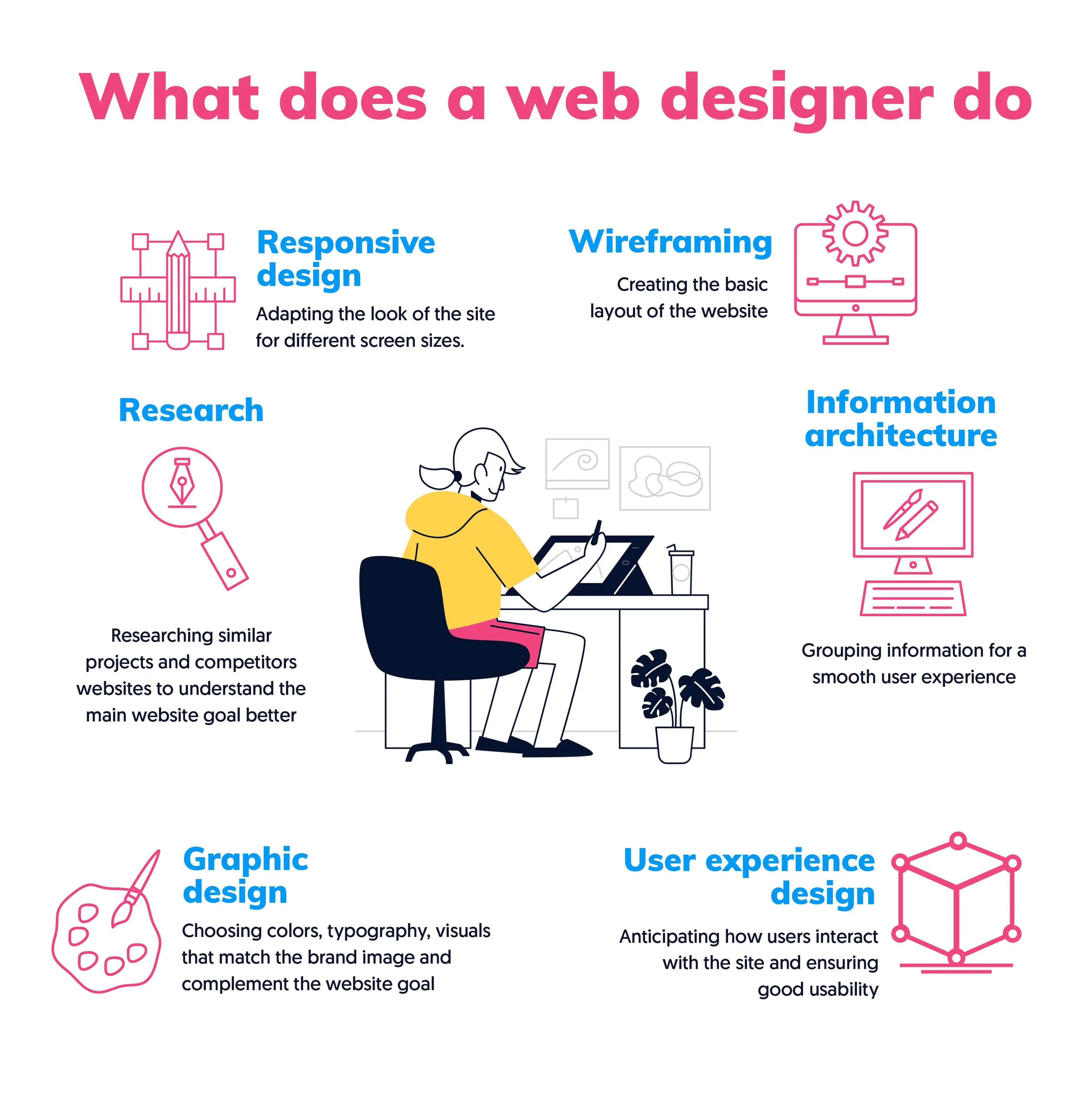Aligned Position Web Design: Crafting Visually Appealing Websites for Modern Businesses
Aligned Position Web Design: Crafting Visually Appealing Websites for Modern Businesses
Blog Article
The Very Best Kinds of Web Layout to Improve Customer Experience and Engagement
In the ever-evolving landscape of digital interaction, the effectiveness of website design dramatically affects user experience and involvement. Different style approaches, such as minimalist, receptive, and interactive layouts, each offer unique benefits that can accommodate varied user requirements. Comprehending which sorts of Web style best offer these objectives can be critical for companies aiming to improve customer satisfaction and retention. However, the question remains: which layout aspects genuinely reverberate with users and foster significant engagement? The exploration of these principles discloses critical insights that might redefine your method to Web layout.
Minimal Website Design
As electronic landscapes come to be significantly messy, minimal Web style has actually arised as an effective technique to improving customer experience. This layout philosophy prioritizes simpleness, concentrating on crucial aspects while eliminating unnecessary diversions. By making use of ample white room, straightforward navigating, and a minimal shade palette, minimal design cultivates clearness and guides customer focus to essential content.
The core principle of minimal website design is to produce a smooth interaction for customers. By minimizing cognitive lots, users can promptly realize details without really feeling bewildered. This straight method not only enhances usability but additionally urges engagement, as visitors are most likely to explore a website that is visually attractive and simple to browse.
Furthermore, minimal design frequently emphasizes typography and imagery, using these elements tactically to convey messages effectively. This concentrate on crucial elements can enhance brand name identity and develop an unforgettable user experience. In significance, minimalist website design is not simply a fad; it is a thoughtful approach that identifies the value of user-centered layout. By stripping away supplementary aspects, designers can produce an extra appealing, effective, and satisfying Web experience for all customers.
Responsive Web Layout
In today's varied electronic setting, responsive website design has become important for creating a seamless user experience across a multitude of gadgets. As users access sites on smartphones, tablets, laptop computers, and desktops, the capacity of an internet site to adapt its format and content to various screen sizes and resolutions is important.
Responsive website design uses versatile grids, pictures, and CSS media inquiries to ensure that Web material is provided optimally, regardless of the device made use of. This strategy not just enhances the visual appeal of a site however also considerably boosts use. Customers are more probable to involve with a site that offers a regular experience, as it gets rid of the disappointment of having to focus or scroll excessively.
By taking on receptive layout, companies can improve their presence and reach a broader audience. In summary, responsive Web style is a basic practice that boosts customer experience, involvement, and total fulfillment.
Interactive Website Design
Responsive Web layout lays the groundwork for enhancing individual experience, but interactive website design takes this an action additionally by involving customers in a more vibrant means - Aligned Position Web Design. By integrating components such as animations, clickable prototypes, and real-time comments, interactive website design astounds customers, drawing them right into a richer surfing experience
This technique not just promotes interaction but additionally motivates customers to explore content proactively as opposed to passively consuming it. Techniques such as gamification, where individuals earn benefits for finishing jobs, can substantially enhance the time invested in a website and enhance total fulfillment. Interactive functions can simplify complicated details, making it more digestible and delightful.

Incorporating interactive layout aspects can likewise bring about higher conversion rates, as customers are more probable to involve with a site that proactively includes them. Aligned Position Web Design. Ultimately, interactive website design changes individual experiences into memorable journeys, ensuring that visitors return time after time
Apartment Layout
Defined by its minimalistic approach, level design highlights simplicity visit here and functionality, removing unneeded components and recommended you read concentrating on essential features. This design philosophy focuses on usability, guaranteeing that users can browse interfaces easily and efficiency. By using a tidy aesthetic, flat design removes the mess typically discovered in more ornate styles, thus enhancing user concentrate on content and capability.
The hallmark of level design exists in its use of vibrant colors, easy typography, and geometric forms. These elements add to an aesthetically attractive interface that is both contemporary and friendly. Additionally, flat style promotes a sense of quality, permitting customers to recognize vital activities and information without distraction.
Moreover, flat layout is specifically efficient in receptive website design, as its simplicity translates well throughout different gadgets and display dimensions. The lack of elaborate textures and slopes minimizes packing times, which is important for preserving customer engagement. As electronic landscapes continue to progress, level style stays a relevant choice for creating user-friendly web sites that improve total experience. By concentrating on essential functions, flat design not only fulfills user requirements yet also motivates seamless communication, making it a vital part of effective website design strategies.
Flexible Website Design
Flexible website design personalizes the customer experience by developing multiple dealt with layouts tailored to various screen sizes and tools. Unlike receptive style, which fluidly adjusts a solitary layout, flexible design uses distinctive formats for particular breakpoints, making sure optimal presentation on different systems. This technique allows developers to concentrate on the distinct features of each device, enhancing use by delivering precisely what users need based upon their context.
One of the key advantages of flexible Web design is its capacity to maximize lots times and efficiency. By offering customized material and photos that fit the customer's tool, internet sites can minimize data usage and improve loading rates. This is particularly advantageous for individuals with slower connections or limited information plans.

Additionally, flexible layout facilitates a more consistent and regulated branding experience. Because developers develop several layouts, they can make certain that the visual aspects line up have a peek at these guys with the brand's identification across various systems - Aligned Position Web Design. This causes a cohesive individual experience, boosting engagement and advertising individual retention
Conclusion
Minimal layout cultivates clarity and focus, while responsive layout guarantees versatility throughout various tools, advertising accessibility. Jointly, these design approaches contribute to the development of easy to use environments that not only boost satisfaction but additionally drive greater conversion rates, highlighting their critical significance in contemporary Web design approaches.

Minimalist layout cultivates clarity and emphasis, while receptive style ensures versatility throughout various tools, advertising ease of access. Collectively, these layout approaches add to the development of user-friendly atmospheres that not only enhance contentment yet additionally drive higher conversion rates, highlighting their crucial importance in modern Web design approaches.
Report this page